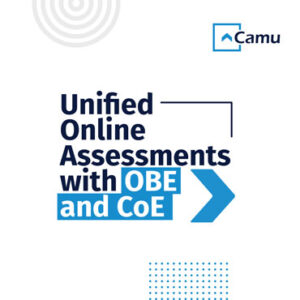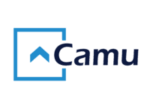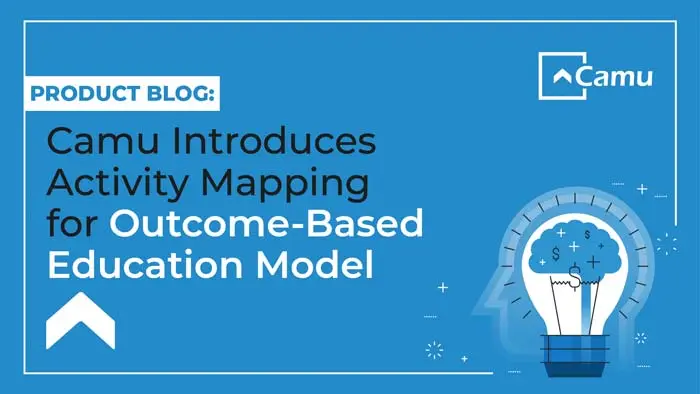
Camu Introduces Activity Mapping for Outcome-Based Education Model
Camu is known for its flexible Outcome Based Education model, which drives an institution’s academic efforts toward outcome attainment.
In contrast to a traditional, teacher-centric approach, Camu focuses on the student’s development, growth, and learning experience.
From curriculum planning and design to teaching methodologies, assessment patterns, and classroom activities, the curriculum is steered by specific outcomes (Program Educational Objectives, Program Outcomes, Program Specific Outcomes, and Course Outcomes) that students are expected to achieve at the end of their program.
Based on these predefined sets of goals, all processes are streamlined at the course, program, and institutional levels.
Making the OBE model even more goal-focused and future-oriented is a new advancement that the product development team has recently launched.
Activity Mapping is a feature that will help institutes generate more holistic and well-rounded outcomes, creating a learning environment that will encourage students to explore academic and non-academic experiences alike.
What is Activity Mapping?
Activity Mapping is the process of utilizing student activities, whether academic or non-academic, for the calculation of Program Outcomes.
By including all curriculum components, from extracurriculars to sports, institutes can better gauge students’ knowledge, skills, and attributes after completion of a program.
This is particularly important when working towards an NBA accreditation, as it ensures quality criteria are verified.
How does Activity Mapping work?
With Camu’s intuitive and user-friendly platform, Activity Mapping for OBE attainment becomes quick and easy.
Activity Mapping can be actioned with a few simple steps.
- Go to the Activity PO Measurement web page under OBE.
- Add in the selection criteria comprising Institution, Degree, Program, Effective Date, and Year of Measurement.
- Add in the Activity Name, Expected Attainment, Expected Attainment as % of Students, PO Mapping, and Blooms Taxonomy.
- Click on Update.
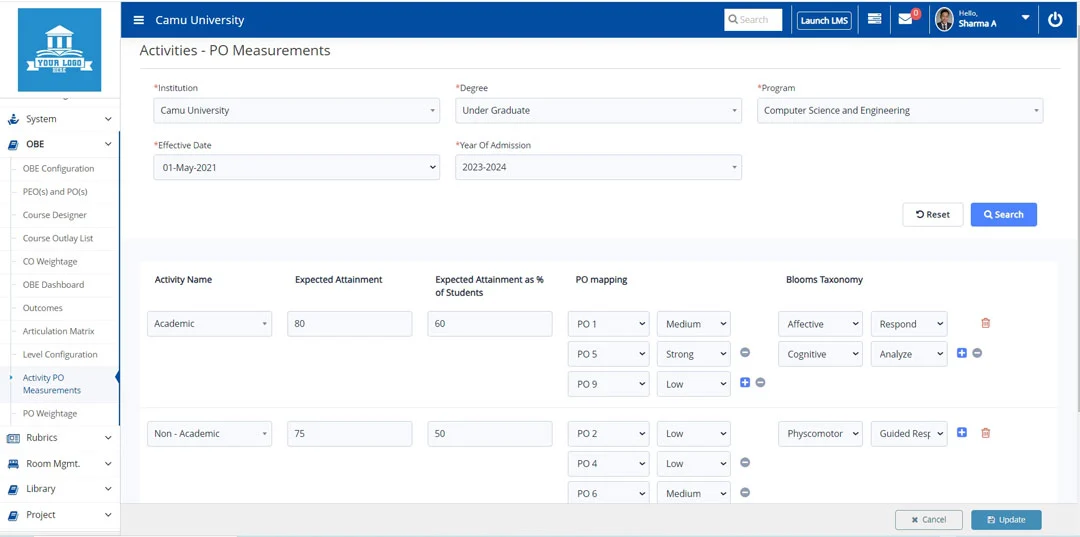
The respective activities get mapped, along with the expected level of attainment, and the percentage of whom have received that score.
The Program Outcomes associated with each activity are also mapped based on their impact level, and finally, the level of complexity and specificity of the outcomes are mapped based on Bloom’s Taxonomy.
Once all the information has been updated, the activities must get mapped to specific students, which can be actioned from the Student Activities web page.
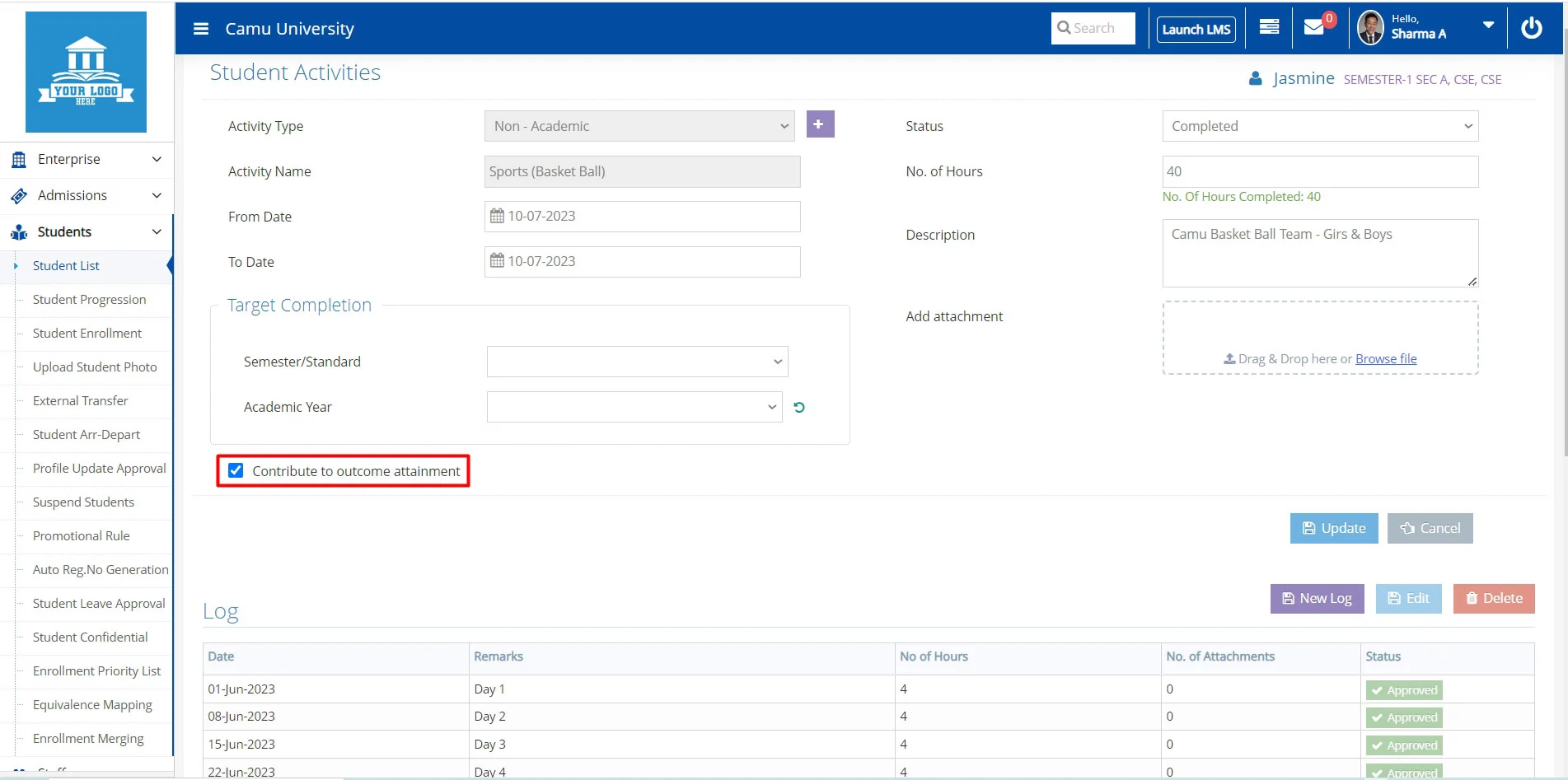
After detailing the nature of the activity, the institute can decide whether this should contribute to outcome attainment or not.
Earlier, the OBE model only let users map Course Outcome weightage, but now you can specify Program Outcome weightage too.
As such, for a particular program, you can determine the attainment value, activity value, and feedback value.
The system will then automatically determine the outcomes for each program and course based on the weightage, which can be accessed within the Outcomes web page with the outcome attainment bar chart and flow chart.
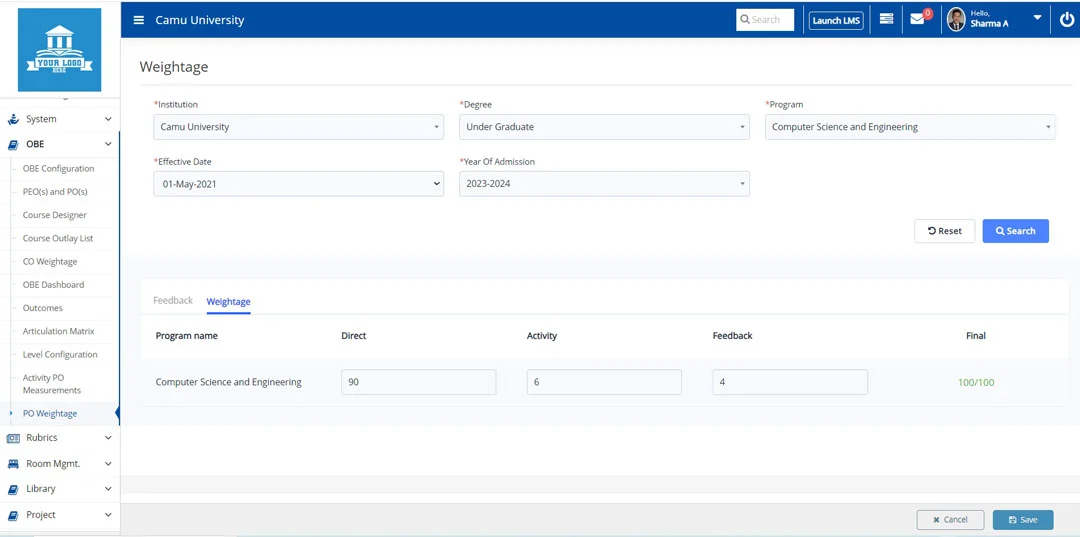
Camu helps institutions design outcome-oriented curricula that comply with all the regulations set by local and international accreditation bodies.
Everything, from teaching methodologies to assessment patterns, is aligned with specific outcomes that meet the institution’s vision and mission statements.
With this new feature, institutes will be able to better guide students toward outcome attainment.

